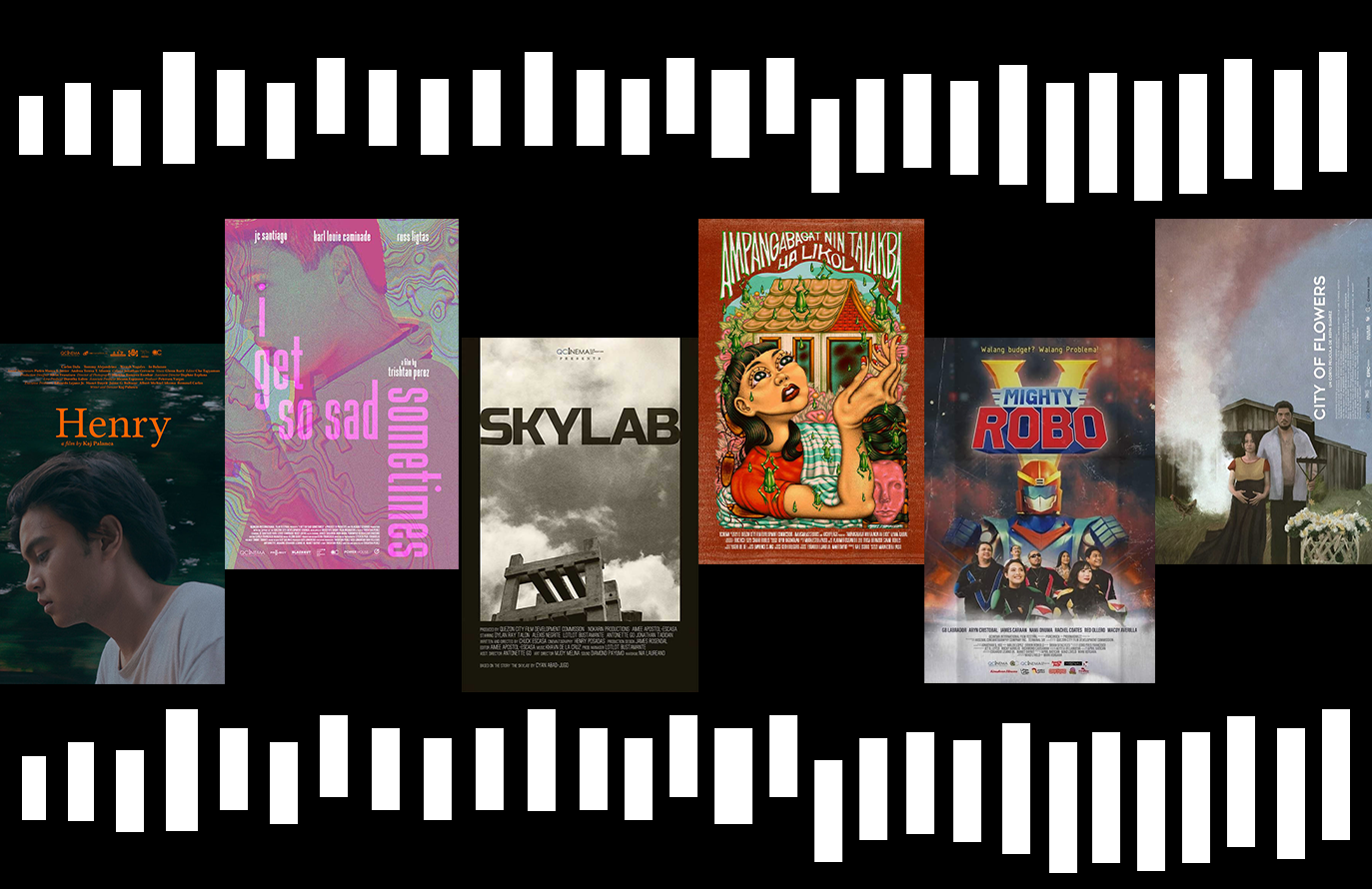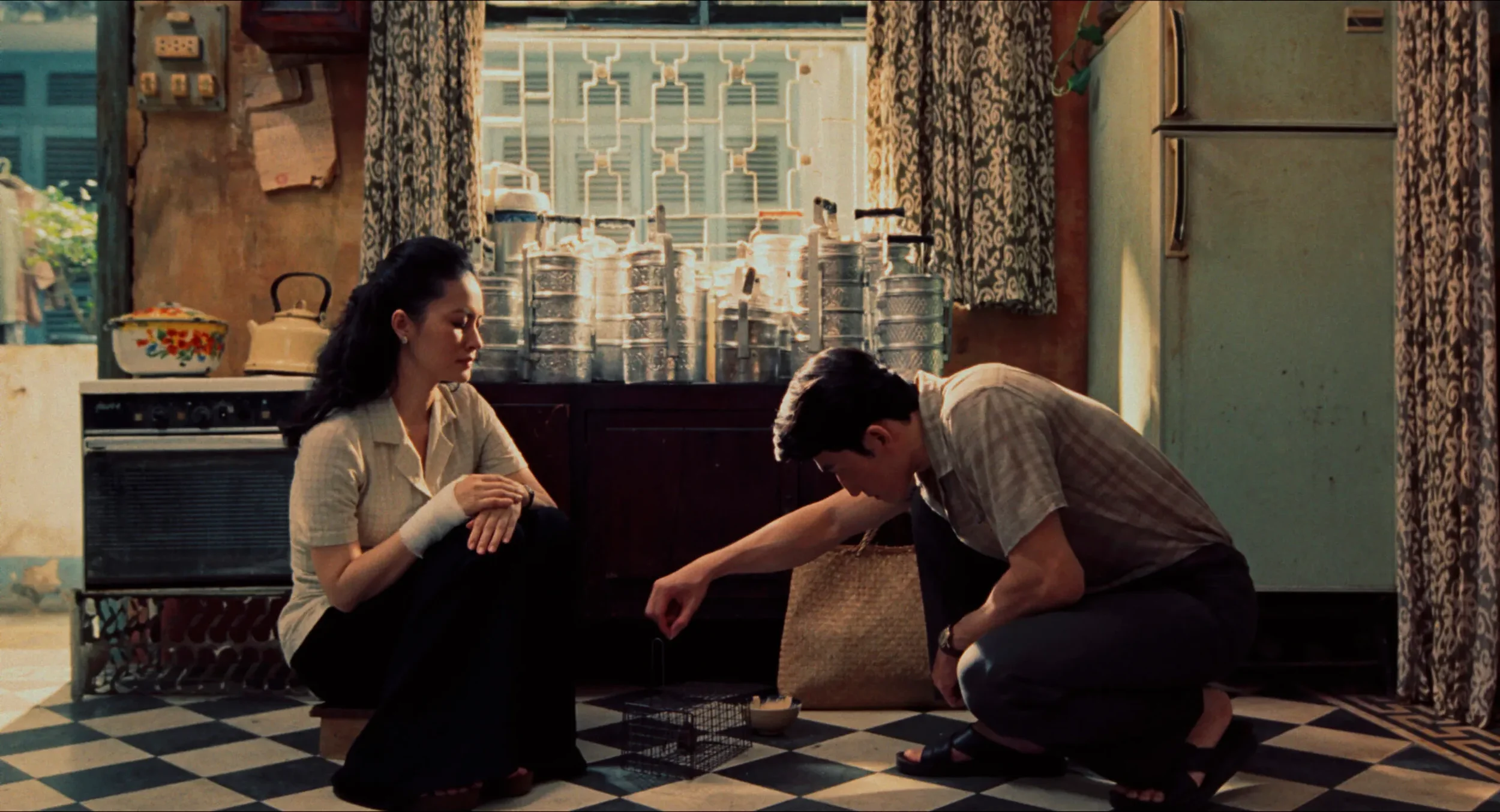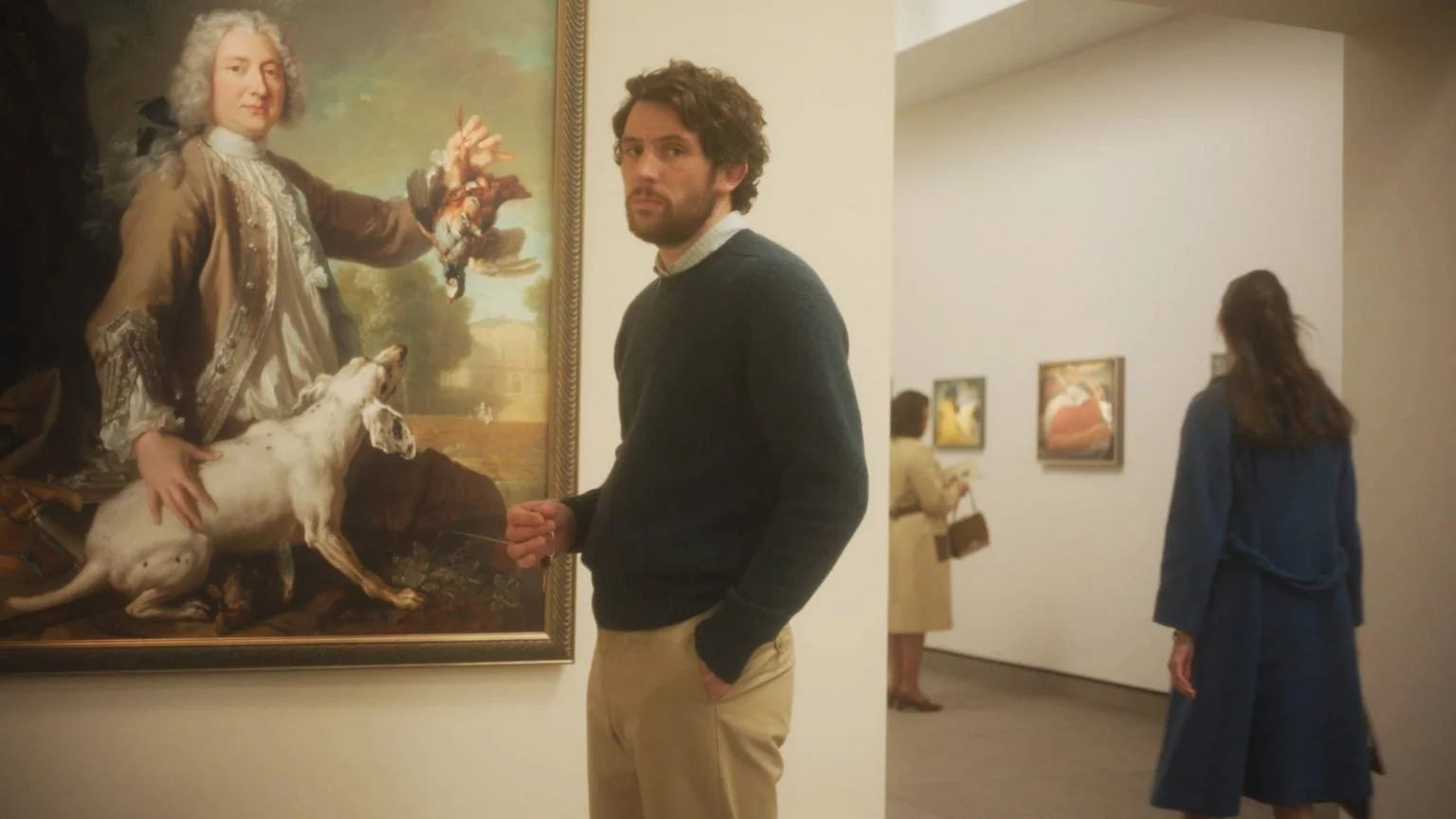‘QCShorts’ REVIEW: A remarkable lineup filled with distinct local voices
‘QCShorts’ REVIEW: A remarkable lineup filled with distinct local voices
The six short films in this year’s QCShorts.
The much awaited sextet of selected local shorts that are competing for this year’s QCinema International Film Festival is here! The lineup consists of an astounding mix of experimental, comedic, tragic, and intimate short films.
Here are the reviews for each short film:
i get so sad sometimes (dir. Trishtan Perez)
From the title itself, the short film evokes the ambience of high school teenage agony. It’s a story in dialogue with the online space, which has changed the way people interact with strangers and how we interact with our own emotions. It’s about Jake, a gay teenager who awaits for a mature man to reveal his face in their obscene calls, perhaps, in a way to confirm that their intimacy is real. Admittedly, I am a fan of Trishtan Perez’s unique vibe as a director, as well as his penchant for squared-off aspect ratios. Their work here is undoubtedly piercing and empathetic. Jake is distant from the outside world, unable to fully reciprocate his friend Marco’s affection, incapable of experiencing the fleeting bliss of prom, and unwilling to move on from the fallout of broken promises.
A still from ‘i get so sad sometimes.’
There are unfulfilled dreams in his head, places supposed to go to, and experiences supposed to be felt with the touch of another. Instead, things are messy, muddled, and uncertain; it’s not so different from what one feels when on the verge of figuring out one’s identity. Jake goes through quiet crises, his emotions unstable, his whole worldview in disarray. His feelings bleed into the frame, showing us warped kaleidoscope images, dizzying street lights, and the sort of step-printed technique seemingly inspired by Wong Kar-Wai. It details just how cruel teenage feelings can get and how anticlimactic relationships can be. As old conversations are recollected, you can’t help but wonder along with Jake where it all went wrong, what signs were already there hinting at the hatchet. But that’s how callous some people can be, and we see right before our eyes how it cuts through Jake and the people around him.
It’s Raining Frogs Outside (dir. Maria Estela Paiso)
For a short film that talks a lot about its hatred for monotony, it sure makes it a point to deliver an entrancing, grotesque, surreal, and definitely non-monotonous experience. After being known for editing, Maria Estala Paiso is now at the director’s chair, and it is a remarkable jump. The plot summary says the film is about Maya going home to Zambales while the world is ending and some frogs are raining outside—but it is so much more than that. Paiso puts us in the place of a homebody who goes through a phantasmagorical journey. It is inspired by a short comic by ‘Electromilk’ that alludes to the struggles of the lockdown. In this world, the thought of staying at home now becomes a nightmare. The old comforts have become stifling. Even the simple strands of hair on the bed can conjure up a battle.
A still from ‘It’s Raining Frogs Outside.’
We are treated to a pastiche of old memories, candy wrappers, similar I.D.s, and quotidian items distorted and arranged into new symbols. There are also old tapes and pictures of Maya’s childhood (including the most haunting image of any childhood birthday: a clown). All of these serve as a reminder of who Maya is because that seems to be in flux at the present moment. There is beauty in the expressiveness of the film; the narration is contemplative and crafts a rhythm for the series of disjointed and abstract imagery. The visual effects and animation are marvelous, a cut above the rest from what we’ve seen in local short films. I’d be lying if I said that I wasn’t thoroughly impressed by some of the film's technical achievements. I often wondered how they’d manage to get a shot done or what it took to make this particular effect look so convincing. I’m looking forward to what Paiso, now as a director, will do moving forward.
Henry (dir. Kaj Palanca)
There are interesting ideas and visual imagery present in this short film. Henry longs for another life, and it’s communicated through subtle glances, unfinished architecture, unowned objects, and somber meditations in-between frames. He goes to the construction site of a mansion to seek compensation for his older brother, who was injured during work. Along the way, Henry pictures the serene sky, a beacon of his unfulfilled life, the same sky that his brother gazed at before his injury. He meets Danilo, another construction worker, who offers him immediate kindness and sympathy, something rarely seen in short films which almost always depict workers in a dog-eat-dog mentality. The film brims with the kind of labor commentary also present in Jade Castro’s Endo but with a potential queer subtext. Carlos Dala plays Henry with restraint and timidity, calling attention to his unspoken feelings and helplessness.
A still from ‘Henry.’
The film isn’t your usual gloomy and ghastful labor rights film that wishes to accentuate the sheer desperation of most lower-class workers. It is much more solemn and sensitive to workers' plights, identifying the spaces they work in as crucibles of solidarity. Despite being rich in subtext, the film somewhat feels underwhelming by its end. More can be said about choosing Henry as the main focal point instead of laborers like his mother and brother. It is undoubtedly an exciting perspective; he sees the hardships of contractualization as well as the uniting compassion of workers, but I can’t help but feel that more could have been extracted from it. Henry constantly peers at his surroundings, at unfinished buildings and houses, at flowers and mountains. He rides a taxi at the start, then in a jeep, waits for a tricycle, and inevitably rides a bike he also does not own. He lives in a rented house, at one point sleeps on an unfurnished bed, and dreams as high as the skies. All of these build up to a sweet embrace in the end, indeed a touching scene, but could have had a bigger impact if there was more synthesis beyond its labor commentary.
MIGHTY ROBO V (dir. Miko Livelo, Mihk Vergara)
Comedy and satire, especially in a time like this, is a much-needed energy booster. The film offers a farcical look into the current state of affairs in the Philippines in a The Office-style mockumentary. Its story revolves around a documentary crew covering the Philippine Giant Monster Defense Institute’s Mighty Robo V program and unravels the sheer incompetence that befalls them. The great Manuel Conde once said that he used comedy as a tool to let general audiences lower their guards by showing clear parallels to real-life political corruption through exaggeration and satire. Mighty Robo V takes that philosophy as a badge and runs with it; it may work for some and for others too annoying and on-the-nose.
A still from ‘Mighty Robo V.’
A vibrant cast of characters and ideas fill the film’s canvas. First, there’s a basketball and gambling obsessed leader in the team. Then, there’s the clearly more competent second-in-command who always has to fix the mess the other leaves behind. There’s also a barrage of sponsors and social media influencers in the team, a sly commentary regarding the fixation on optics, brand recognition, and profit that even public officials fall for. It’s hilarious in the first half but gets bogged down by its repetition and fast-paced editing in the second half. At certain parts, the chaos just becomes too much to handle. It became a spinning wheel of gags that were uproariously funny in the initial set-up but had a reduced mecha-punch in its more traditional staged set-piece in the end.
SKYLAB (dir. Chuck Escasa)
Dylan Ray Talon is a great actor. That’s about all I can say about this missed opportunity of a short film. It’s set in 1979 during the height of martial law and Marcos’ grip on the country; the Skylab satellite is falling to the earth, and the end of the world seems imminent. However, the only thing immediately imminent in this film is its stunted dialogue, rushed editing, and egregious sound design. No matter how well-intentioned the film tries to be in its politics or coming-of-age drama set in a small school that figuratively embodies authoritarianism, it is off-set by its unengaging visuals and demonstrably weak composition.
A still from ‘Skylab.’
Perhaps, it is a film intended to feel like the past, a minimal film that packs a piercing hit in what it wants to say about the present through the past. If so, then it is the background that feels more interesting; the posters of Marcos behind a teacher serving as a mouthpiece for his propaganda, the columns of chairs that are reminiscent of the Diliman commune, the threat of the Philippine Constabulary felt through the echoes of a phone call. Therein lies the film’s bigger interest; it wants to construct new meaning by juxtaposing it to the naivety of young students. But, unfortunately, it falls flat in its execution.
CITY OF FLOWERS (dir. Xeph Suarez)
From seeing the film poster to seeing its opening and final shot, it is clear that director Xeph Suarez has a knack for picturesque visuals and brilliant framing. The film is set in Zamboanga during the Feast of the Nativity of Mary and is about two couples trying to survive a drought preventing them from selling as many flowers. It’s a deceptively simple premise, and it sets up a provocative finale rooted in real-world tragedy. The old house the couple lives in is quiet and far away, yet things start percolating around their surroundings. There are construction vehicles and workers that now emerge around the area. Peace rallies that offer a surplus of money that’s just too good to pass up start rearing their heads.
A still from ‘City of Flowers’.
There is an air of desperation felt across the City of Flowers. Nasser, the husband, makes passing remarks to his wife that they should try doing a blood sacrifice, a superstition that supposedly nourishes the soil of their flowers. In the city, people prefer imported flowers despite their artificiality simply because they are cheaper. Even the child's name, Angelito or Christiano, is a more Christian name rather than Muslim, a commentary on how volatile the Moro Islamic south identity is under a majority Christian country. Then, in its more prominent socio-political theme, the 2013 Zamboanga siege—a key flashpoint that precedes the Bangsamoro Basic Law—is highlighted in the film’s climactic ending. The event wrought faint cries seemingly forgotten and shed blood across the soil of a flower sullied by tragedy.
QCShorts are available on-demand at KTX.ph from November 26-30. They will also be screened at Gateway Cineplex 10 on November 27 and December 4.



















